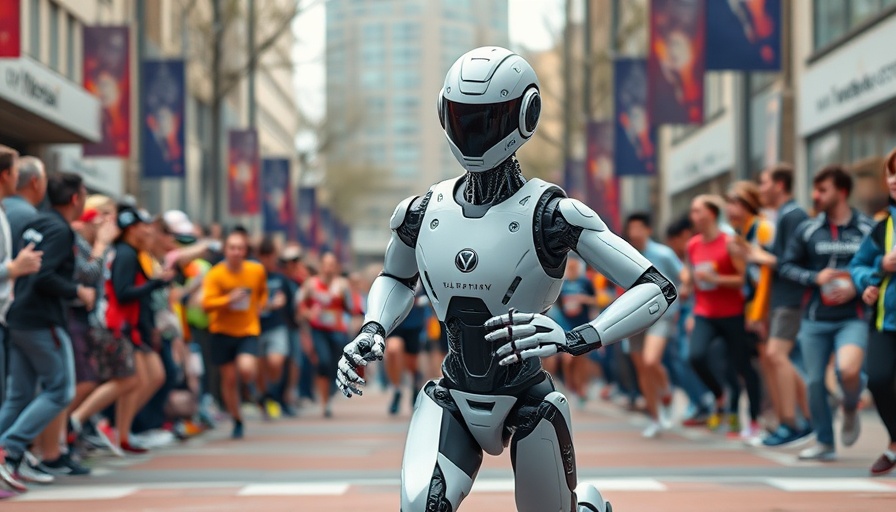
Humanoid Robots Struggle at the Beijing Half-Marathon: An Industry Snapshot
In a remarkable blend of technology and sport, the recent Beijing E-Town Humanoid Robot Half Marathon witnessed 21 humanoid robots competing alongside around 12,000 human athletes. Despite the innovative spirit behind the event, it quickly became evident that humanoid robots still have a long way to go, with only six robots managing to cross the finish line.
Challenges of Robotic Athletics: Overcoming Physical Limitations
The most impressive contestant, the Tiangong Ultra, developed by UBTech with the help of the Beijing Humanoid Robot Innovation Center, took a staggering 2 hours and 40 minutes to finish. Its performance raised eyebrows—not just for the lengthy time, but for the numerous setbacks it encountered, including multiple battery changes and an unfortunate tumble. The event highlighted the stark contrast between human and robotic endurance, with the minimum completion time for human runners set at 3 hours and 10 minutes.
The Robots' Performance: A Mixed Bag of Successes and Failures
While the race generated buzz, the performance of the robots was less than stellar. Professor Alan Fern of Oregon State University remarked that the focus of robotic development has primarily been on mastering tasks across various environments rather than maximizing speed. During the run, many robots exhibited overheating issues and failed to maintain a consistent pace, leading to frequent replacements mid-race. This scenario illustrated that, despite advancements in hardware, robots still face significant limitations when it comes to endurance and reliability.
From 5Ks to Half-Marathons: A Leap in Robotics
Fern noted a critical step in robotic evolution. He observed improvements from running 5K races to tackling a half-marathon. The ability of these machines to walk reliably, a feat that was nearly unattainable five years ago, now stands as a stepping stone toward more ambitious athletic endeavors. However, spectators and participants alike were reminded that hardware robustness continues to be a challenge, as failures during more extended events were rampant.
Public Engagement: Seeing Technology in Action
The event, while showcasing the shortcomings of humanoid robotics, also inspired local pride. Many human runners took the time to engage with the technology, stopping for selfies with Tiangong Ultra—a testament to the growing interest in robotics among the public, despite the failures. This interaction underlined a vital point: as developing nations like China push the envelope in robotics, public engagement is crucial.
The Future of Humanoid Robotics: Opportunities and Insights
Looking ahead, events like the Beijing Half-Marathon pave the way for robust discussions about the future of robotics. Technologies that support humanoid mobility are still in their infancy, and advancements in AI are needed to bridge the gap between robotic performance and human capability. As engineers and researchers invest in improving software and physical design, the next decade may yield robots that not only compete competitively but also contribute significantly to industries like logistics and healthcare.
The Broader Narrative: Reality vs. Expectation
Despite the immediate challenges, the race served as an essential reflection on the progress and reality of humanoid robotics. The initial excitement surrounding advanced robotics often overshadows the practical obstacles that must still be addressed. For both enthusiasts and skeptics, the race illustrated an ongoing narrative of innovation, persistence, and growth—one reminiscent of humanity's own journey through athletics and competition.
Conclusion: Reflections on Robotic Potential
The Beijing Half-Marathon not only showcased the innovative strides in robotic engineering but also highlighted the significant gaps that remain. As we witness these machines evolve, it's a reminder of the complexities involved in developing technology that aims to match human ability. Humanoid robots will undoubtedly continue to improve, but for now, they're a work in progress that offers a glimpse into the future of robotics.
 Add Row
Add Row  Add
Add 




Write A Comment